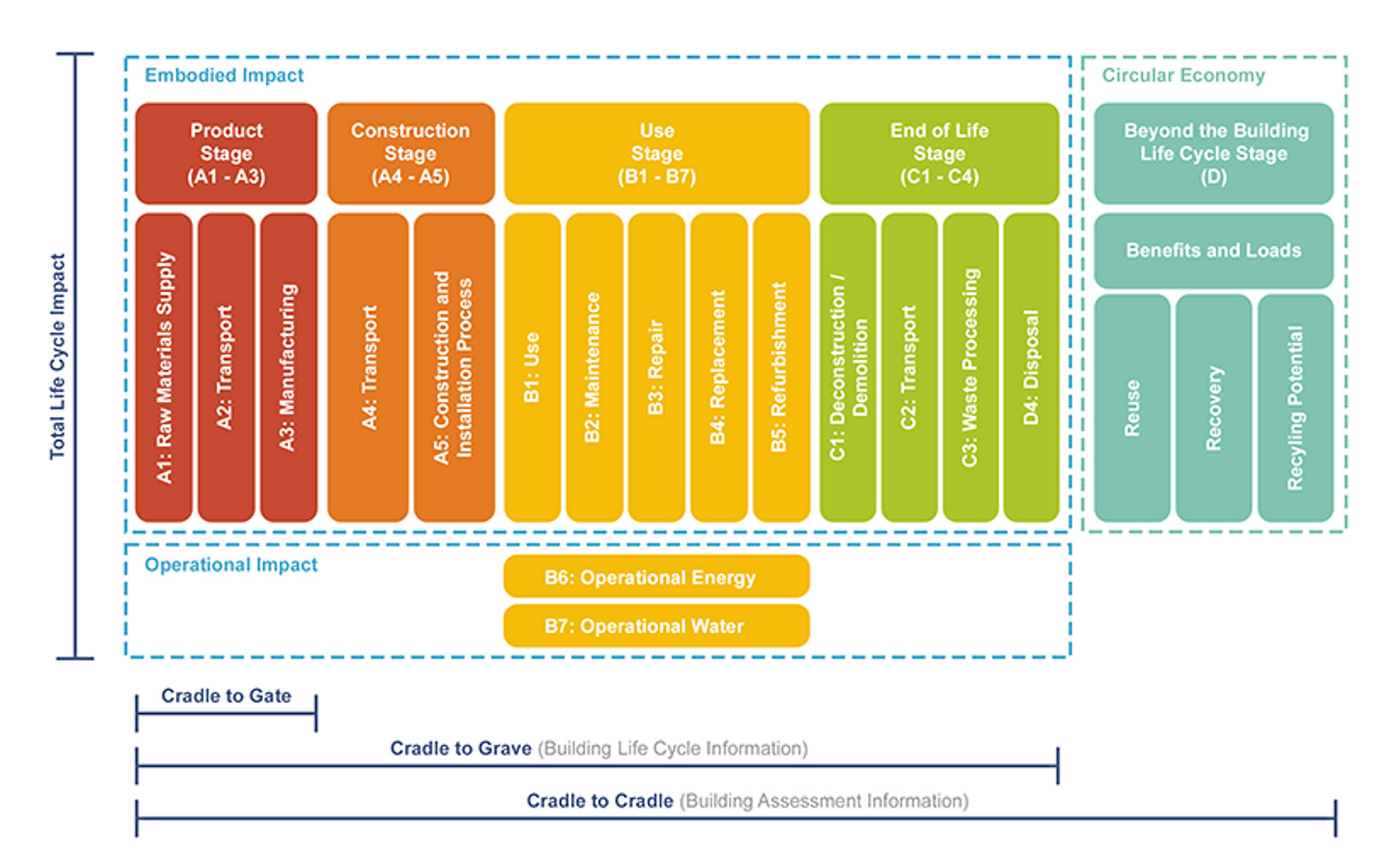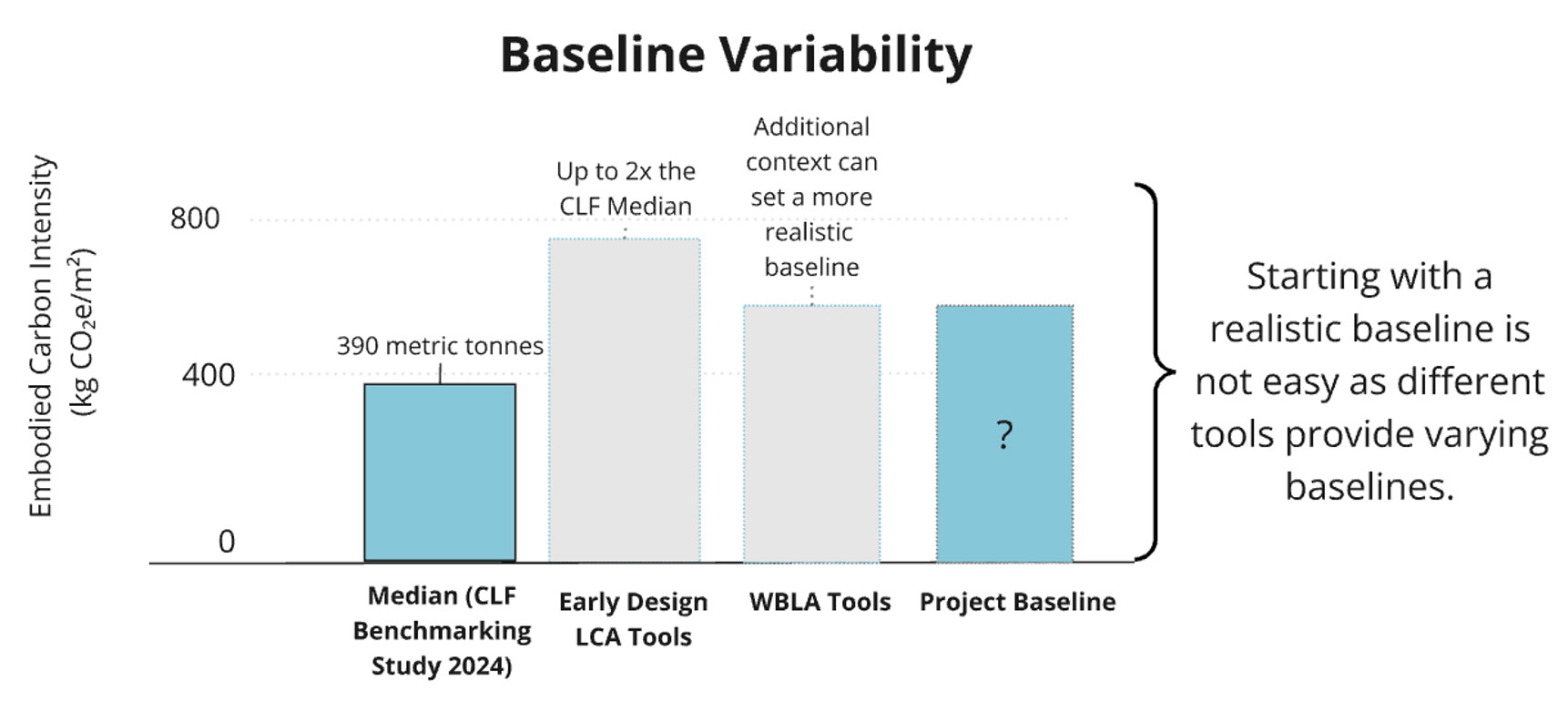Defining baselines for Whole Building Life Cycle Assessments
Discover key factors for setting an accurate Life Cycle Assessment (LCA) baseline. Learn to benchmark effectively, measure carbon savings, and make informed sustainability decisions

Written by
Melissa Lopez
LEED GA, Project Manager
Factors to Consider when Setting an LCA Baseline
As the design and construction industry continue to advance sustainability, whole building life cycle assessment (WBLCA) has become essential to measure a building’s environmental impact through its lifespan.
Design teams can choose between two approaches, a prescriptive or a performance path. The first approach can seem more straightforward as LEED (Leadership in Energy and Environmental Design) and CalGreen offer specific material Global Warming Potential (GWP) targets. On the other hand, the performance path offers more flexibility as long as the project is able to show carbon reductions against a set baseline.

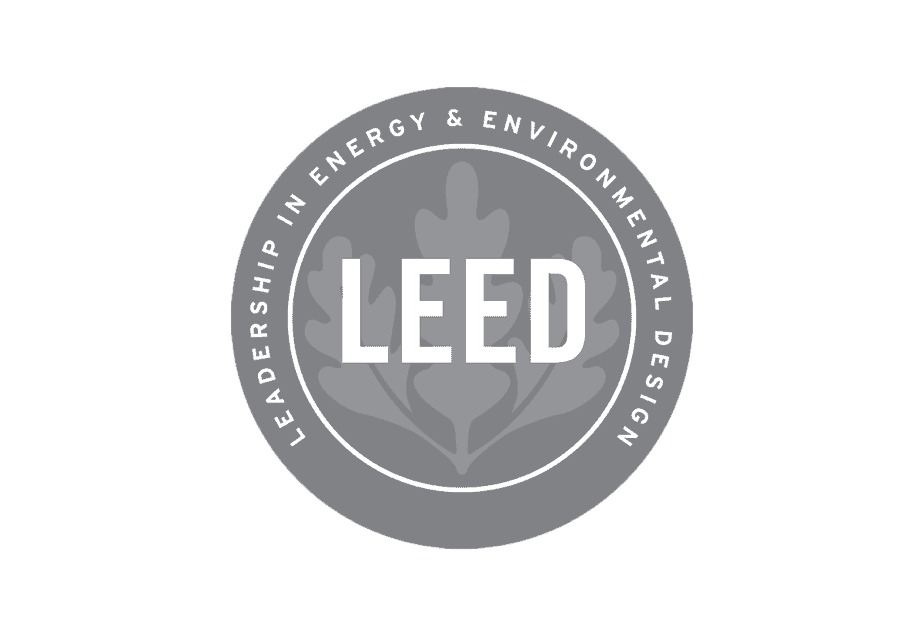
Understanding Life Cycle Assessment (LCA) and its Importance
A Life Cycle Assessment (LCA) will capture a material’s various life cycle stages, including sourcing and manufacturing stages, while tracking each stage’s associated environmental impacts like GWP, also referred to as embodied carbon. With a growing focus on carbon reduction, quantifying carbon savings has become crucial.
As praise for carbon savings grows, so does the need to navigate the ambiguity of establishing benchmarks and claiming carbon reductions as the project moves through the design and construction phases.
While LCA standards provide general modeling guidelines, LCA practitioners must consider factors beyond said standards. Determining where to draw the line between establishing a benchmark and accurately claiming carbon savings can quickly become contentious, especially for projects in locations with more stringent code requirements.
The Role of WBLCA in Green Building Standards and Certifications
LEED offers a single point for conducting a WBLCA and up to six points for environmental impact reductions beyond embodied carbon However, the credit doesn’t specify carbon benchmarks, meaning that projects can assume unrealistically high benchmarks and claim impact savings on the status quo. When in reality, truly impactful reductions need to come from deliberate efforts throughout the process.
Become Familiar with Carbon Intensities
Recently, Royal Institution of Chartered Surveyors (RICS), an organization based out of the UK that focuses on setting sustainability standards set globally relevant WBLCA guidelines. The report draws attention to the importance of using carbon intensities (kgCO2e/m2) as a way to establish consistency both in region-specific and global benchmarks. Not only is it important to use carbon intensity for the overall project, but benchmarking the carbon intensity of specific project phases and specific building elements.
Tracking these metrics throughout the design process helps identify any discrepancies between the initial baseline estimates and the actual outcomes. It is easy to overlook the opportunity minor building elements can have in the building’s carbon impact. Interior elements, which are not required for LEED’s WBLCA credit, yet Carbon Leadership Forum’s (CLF) benchmarking report found that interior elements can increase a project’s carbon intensity by up to 11%.
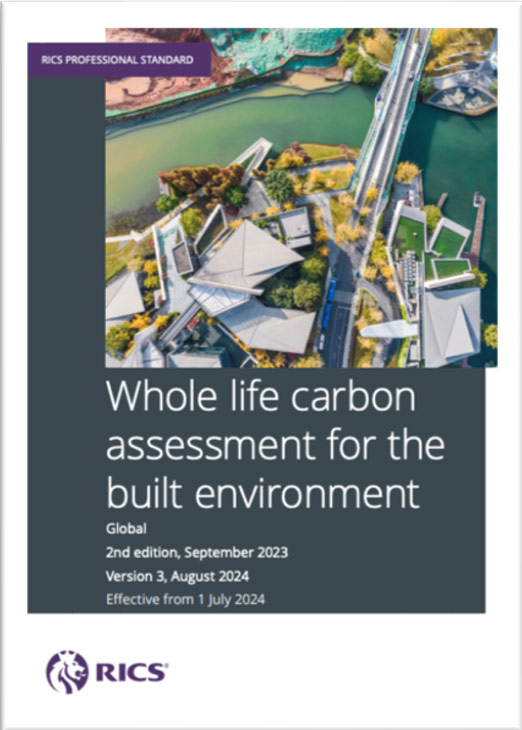

Refer to Specific Resources for Benchmarking
While there are many websites available to create rough estimates for a project’s baseline, those initial estimates should be used cautiously. What might be initially considered a back of the envelope approximation, could result in the significant and unrealistic overestimations of carbon savings. While certifications like LEED do not offer clear carbon baselines, it is a best practice to compare the initial baseline with averages found in the region, the building type and construction code.
Choose the Right LCA tool for Accurate Assessment
In a CLF study of 30 different WBLCA studies, the embodied carbon intensity (ECI) for the commercial buildings ranged from 290 to 460 kg CO₂e/m². While this doesn’t mean a project’s baseline can’t deviate from this range, it is helpful for LCA practitioners to know why, if it does. Some early design LCA tools might suggest baselines that are twice as high as the upper limit of the benchmark study. In these cases, it is important to only use these tools as they were intended and not as official WBLCA benchmarking tools.
In a field where greenwashing is a concern, it is important to be diligent in selecting and using the appropriate tools. It might be tempting to want to use many tools for different project phases, but this could lead to inconsistent assumptions and skewed carbon savings projections.
Leveraging WBLCA Databases for Better Comparisons
It is very realistic that a project could have a specific design or material that can result in a high carbon intensity baseline. In these cases, focusing on carbon intensity of specific building elements is helpful, then comparing those metrics with other projects. In Europe, Built Environment Carbon Database (BECD) aims to create a depository of many projects that follow the RICS LCA framework for easy comparison. Similar to this, users of OneClick LCA can refer to the Carbon Heroes Benchmark to compare their project to previously submitted and verified projects.
LCA practitioners are crucial in facilitating this process to make sure that carbon reduction claims reflect the efforts of the project team. Actively thinking about the complex landscape of appropriate benchmarks and finding the right medium to account for a project’s carbon saving efforts is an endeavor we must approach diligently in order to make valid sustainability claims.
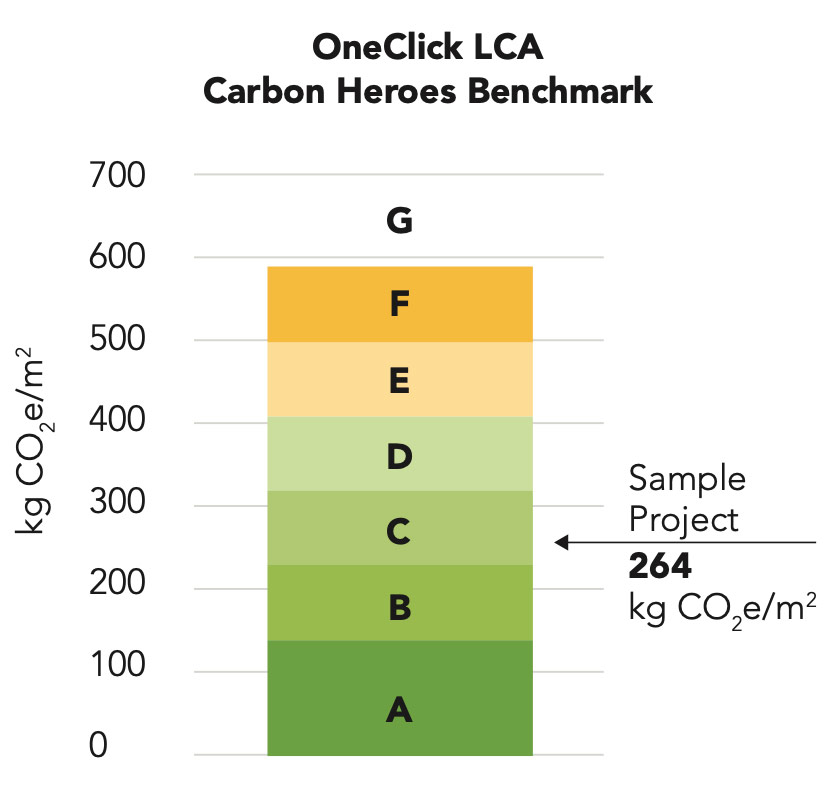
Image 1: Carbon Heroes Benchmark compares your current project to similar buildings with the same use-type across the project's selected country.
Want to learn more about embodied carbon, low carbon specs and WBLCAs? Connect with us today!
References for Further Reading
FAQs on Setting LCA Baselines
An LCA baseline is an initial benchmark of a building’s environmental impact across its entire life cycle, from material sourcing to disposal. It helps measure environmental impacts like carbon emissions and informs sustainability efforts.
Carbon intensity (measured as kgCO2e/m²) standardizes how carbon emissions are measured relative to a building’s size and design phase. It allows for accurate comparisons across different projects, building phases, and regions.
Choose a tool designed for your specific project goals, considering factors like region, building type, and local construction codes. Avoid using multiple tools for different phases, as this can lead to inconsistent assumptions and skewed carbon savings.
Yes, setting an unrealistic baseline can lead to falsely claiming larger carbon savings than genuinely achieved. Ensuring that the baseline is realistic and aligned with recognized standards prevents greenwashing.
Yes, while interior elements may not always be required for certain certifications like LEED, they can contribute significantly to a building’s carbon intensity and should be considered for a complete LCA.
Use established benchmarking resources like the CLF Benchmarking Study or the RICS LCA Framework. Tools like OneClickLCA also provide benchmarking comparisons to previously verified projects.

